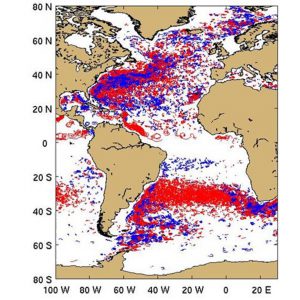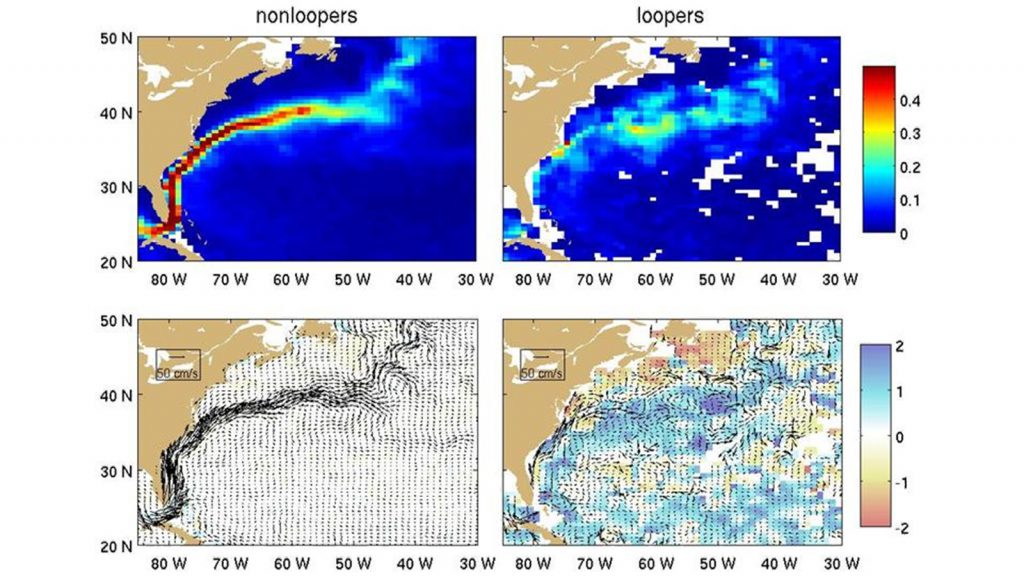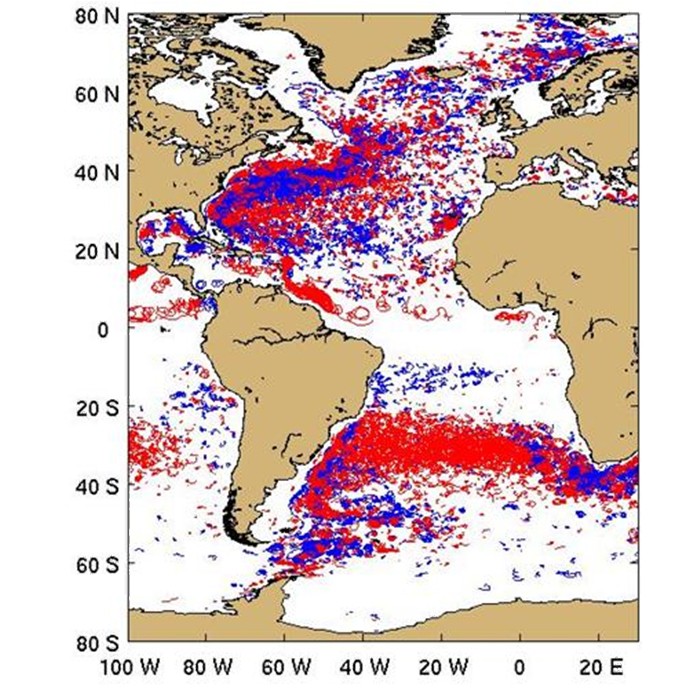
In a recent study by Lumpkin (2016) looping trajectories of surface drifting buoys were extracted from the global drifter dataset and analyzed in order to examine the distribution of submesoscale to mesoscale vortices. Over 15,000 looping trajectory segments were identified worldwide.
While 2/3 of these segments were 14-39 days long, some persisted for hundreds of days; the longest looper in the record persisted for 287 days. The Lagrangian integral time scale was estimated for the looper segments, and is generally very close to the orbital period – a value several times larger than the integral time scales characterizing drifters that do not loop. Fundamental time-mean quantities such as total kinetic energy and velocity were also shown to be significantly different between loopers and non-loopers. These results suggest that a careful approach to the data might require separately calculating means of the non-loopers and loopers, and only afterward combining the weighted results for an overall time-mean picture. While many of the loopers with large radii orbit vortices identified in altimeter-derived eddy census data, many with smaller radii do not match vortices resolved in altimetry. The data from this study are available at the link.
The results of this study help to improve analyses of the drifter data set, to better understand global surface currents.

Lumpkin, R.: Global Characteristics of Coherent Vortices from Surface Drifter Trajectories. J. Geophys. Res.-Oceans, 2016.
